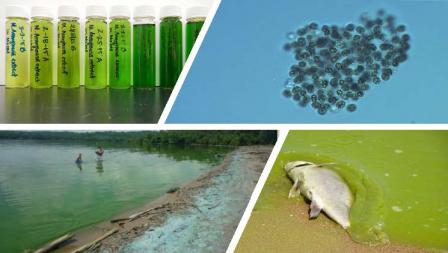Harmful Algal Blooms and Cyanobacteria Research
Most species of algae are not harmful, but sometimes certain types bloom in excessive amounts and can cause harm to human and pet health, aquatic ecosystems, and local economies. These harmful algal blooms (HABs), usually associated with algae that produce toxins, cause problems across the Nation. Sometimes HABs are referred to as red tides, but this can be misleading since they can be different colors. Also, even though they are classified as bacteria, cyanobacteria—sometimes referred to as blue-green algae—exhibit characteristics of algae and are associated with HABs. EPA researchers are looking for ways to eliminate or reduce the negative effects of HABs on human health and the environment.
Research Areas
- Monitoring and Remote Sensing
- Toxicology of Cyanobacteria
- Ecology of Harmful Algal Blooms
- Epidemiology and Health Effects of Cyanobacteria
- Harmful Algal Blooms and Drinking Water Treatment
- Approaches to Reduce Nutrient Loadings for Harmful Algal Blooms Management (STAR Grantee Research)
Tools and Methods
Mobile Application:
Analytical Methods:
- Method 544: Determination of Microcystins and Nodularin in Drinking Water
- Method 545: Determination of Cylindrospermopsin and Anatoxin-a in Drinking Water
- Method 546: Determination of Total Microcystins and Nodularins in Drinking and Ambient Waters
- Method for Determination of Cylindrospermopsin and Anatoxin-a in Ambient Freshwaters
- Method for Determination of Microcystins and Nodularin in Ambient Freshwaters

